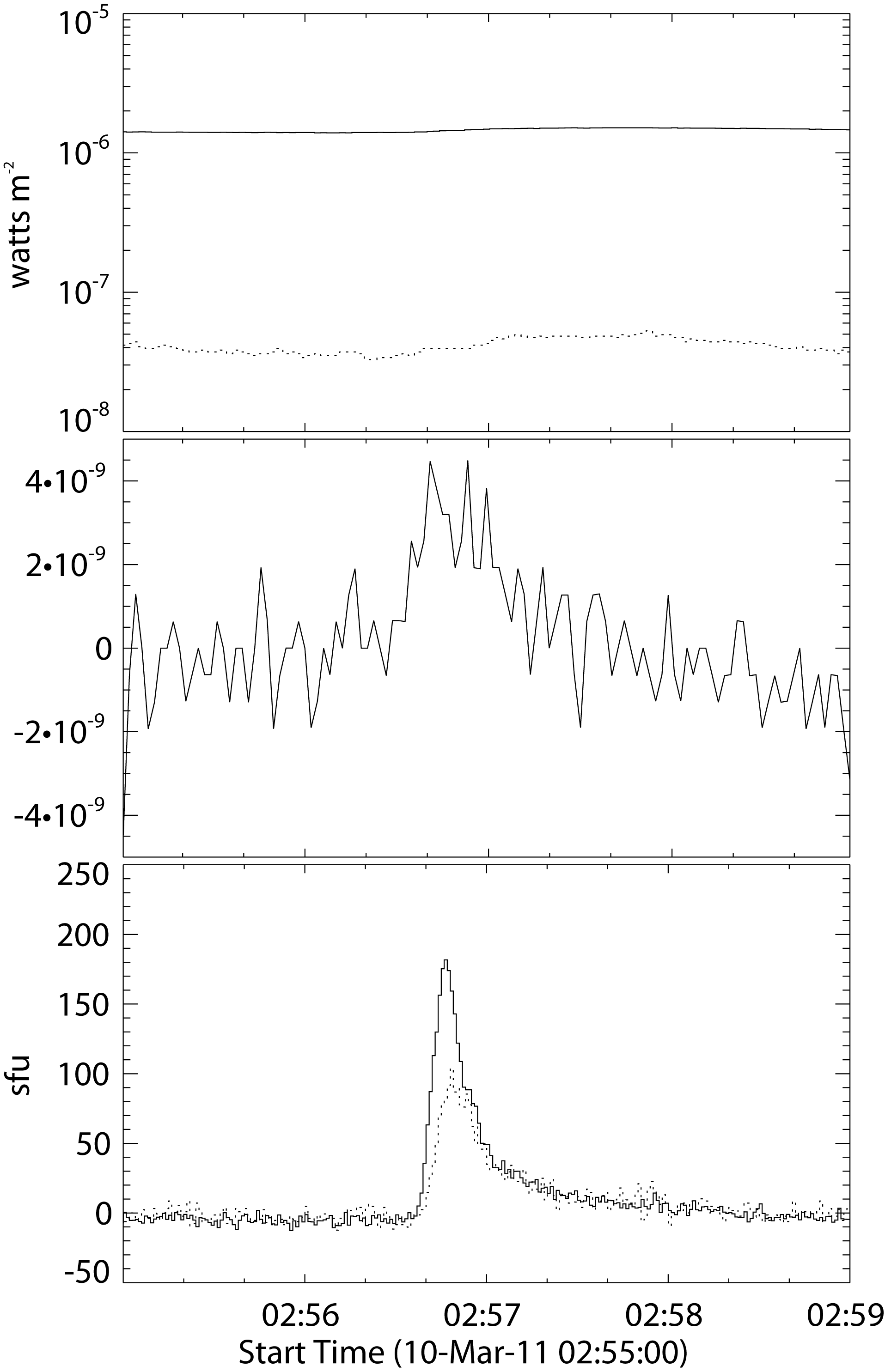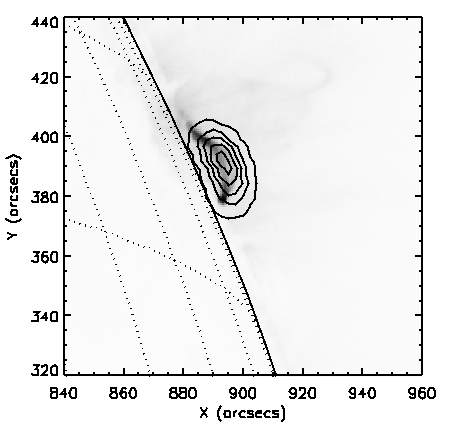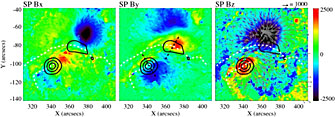GEMSIS-Sun
Research on Particle Acceleration in Solar Flares with Multi-Wavelength Data Analysis
A compact flare was observed with Nobeyama Radio Heliograph (NoRH) slightly behind the west limb on 10 March 2011. The microwave peak flux at 17GHz and 34GHz were 210 and 133 SFU, respectively. However, only B1-level enhancement was detected in the GOES soft X-ray light curve on C1-level background during the flare period. In addition to microwaves, Suzaku detected hard X-ray emissions even in the energy range above 100 keV. It is clear that high-energy electrons are effectively created in this flare while thermal emission was very weak. Fleishman et al. (2011) reported a cold tenuous flare with acceleration, but without heating. This flare seems to be similar. However, footpoint regions, i.e., strong magnetic field regions where intense gyro-synchrotron emissions are expected, were occulted in the case of this flare. Additionally, even in a higher-frequency range (34GHz) emitted by higher-energy electrons, intense microwave emissions were detected. These features make more difficult to understand the observational results. We discuss why this unique feature appeared in this event. One possibility is that the magnetic field around the looptop region is intense and relatively a large number of lower-energy electrons emit microwaves.


Left: (top) Soft X-ray flux observed with GOES (solid line: 1-8 Å, dotted line: 0.5-4 Å). (middle) time-derivative of the GOES 1-8 Å flux. (bottom) time profiles of 17GHz (solid line) and 35 GHz (dotted line) microwaves observed with Nobeyama Radio Polarimeters. Right: EUV 131 Å image taken with SDO/AIA at 2:57:33 UT (grey scale) and 34 GHz microwave image taken with NoRH at 2:56:46 UT (contours). Contour levels are 90, 70, 50, 30, 10 % of the maximum brightness in this image.
Solar Flare Research with High-Speed Imaging Observations in Visible Lights
A new imaging system for observing solar flares was developed and installed on the Solar Magnetic Activity Research Telescope (SMART) at the Hida Observatory of Kyoto University as the joint research program with STEL. The system simultaneously takes H-alpha and continuum images at a rate of 25 frames per second. We continue the collaborative researches on non-thermal particles, their acceleration site, and the trigger of flares by capturing the rapid temporal and spatial evolution of flare kernels observed in the solar chromosphere and photosphere at the onset of flares.
Multi-Wavelength Observation of Electron Acceleration in the 2006 December 13 Flare
We performed a multi-wavelength observation of a solar flare that occurred on 2006 December 13 with the Hinode satellite, the RHESSI satellite, and the Nobeyama Radioheliograph (NoRH), in order to study the electron acceleration site and mechanisms. A photospheric vector magnetogram obtained from the Solar Optical Telescope on board Hinode and a hard X-ray (HXR) image taken by RHESSI reveal that the HXR sources are located at the region where the horizontal magnetic fields change direction, i.e., the magnetic separatrix. Microwave images taken with NoRH suggest that the accelerated electrons are distributed parallel rather than perpendicular to the magnetic field lines. We conclude that these observations are evidence of the electron acceleration due to the curvature drift near the magnetic separatrix (Minoshima et al. 2009, ApJ).

(Figure caption) Vector magnetogram taken by Hinode and 35-100 keV HXR image observed with RHESSI (black contours). From left to right, the strengths of the horizontal magnetic fields (east-west and south-north directions), and the longitudinal magnetic field are shown in units of Gauss. The horizontal magnetic fields are also indicated as gray arrows in the right image. The white dashed lines correspond to the position of the flare ribbons. These images show that the HXR sources are located only at places where the horizontal magnetic fields change direction.
 Japanese
Japanese